NOTES
Thursday, July 5, 2007
00:10:00
Birds in Order of Arrival:
1. mwlblb chases morlb
2. mrgo
3. morlb
4. unbanded shopper chases mwlblb
5. mlbob
6. mwbw
7. mgrr
8. mplbp
9. mwrg mgrr’s mate
10. juvenile
11. unbanded (red bill)
Notes:
Last night was July 4th. Relentless boom of fireworks filled the heavy, overcast sky with splashes of light. The acrid residue of smell wafted clear into the house and I thought of the jays, roosting in redwood trees. I briefly heard a “squa, squa,” from a high place—the first I’ve heard a jay call after dusk. Our idea of celebrating must be so frightening for them.
Yet, they were here this morning, ready as ever for a peanut feast, unscathed by the night’s festivities. Once again, the males arrived first. Morlb (Red Eye) is now a regular and was chased by mwlblb (Tame Bird). Unbanded Shopper demonstrated a particularly aggressive move, flapping his wings, hopping towards mwlblb, who yielded and flew to a new perch.
Red Bill landed. He has distinctly orange feathers, the color of a robin’s breast, above his bill. I think of him as an elder. He stands tall, almost regal. The other males fly around him and he remains, undisturbed. Jeff J., after describing Red Eye’s orange feathers to me, said Pia associated orange feathers with age. It’s seems unusual that I haven’t seen a single bird with orange feathers and now have seen two in the last two days. Makes me wonder if the two birds are related, or maybe they're both just old.
My cousin Kristin has asked me if I’ve named the birds. Megan, my daughter, asks the same question. I wobble between writing a narrative--full of personalities, anthropomorphisms and conjectures; and documenting the evidence—those precise observations a scientist would make and later enter in a database. I feel as clumsy as a baby jay, stumbling over a peanut. But, yes, Kristin and Megan, I am naming the birds. It looks like this:
1. mwlblb Tame Bird
2. mrgo Mr. Go
3. morlb Red Eye
4. unbanded shopper Shopper
5. mlbob Mrs. Go
6. mwbw Checkers
7. mgrr Droopy
8. mplbp Princesa (Cesa)
9. mwrg Wringer
10. juvenile unbanded
11. unbanded (red bill) Red Bill
Clearly, this is only a start. There’s mbrg--Trapper, I think, because he spends so much time in the trap, and Bessy for rrmo because she is a mess, a Messy Bessy.
Birds in Order of Arrival:
1. mwlblb chases morlb
2. mrgo
3. morlb
4. unbanded shopper chases mwlblb
5. mlbob
6. mwbw
7. mgrr
8. mplbp
9. mwrg mgrr’s mate
10. juvenile
11. unbanded (red bill)
Notes:
Last night was July 4th. Relentless boom of fireworks filled the heavy, overcast sky with splashes of light. The acrid residue of smell wafted clear into the house and I thought of the jays, roosting in redwood trees. I briefly heard a “squa, squa,” from a high place—the first I’ve heard a jay call after dusk. Our idea of celebrating must be so frightening for them.
Yet, they were here this morning, ready as ever for a peanut feast, unscathed by the night’s festivities. Once again, the males arrived first. Morlb (Red Eye) is now a regular and was chased by mwlblb (Tame Bird). Unbanded Shopper demonstrated a particularly aggressive move, flapping his wings, hopping towards mwlblb, who yielded and flew to a new perch.
Red Bill landed. He has distinctly orange feathers, the color of a robin’s breast, above his bill. I think of him as an elder. He stands tall, almost regal. The other males fly around him and he remains, undisturbed. Jeff J., after describing Red Eye’s orange feathers to me, said Pia associated orange feathers with age. It’s seems unusual that I haven’t seen a single bird with orange feathers and now have seen two in the last two days. Makes me wonder if the two birds are related, or maybe they're both just old.
My cousin Kristin has asked me if I’ve named the birds. Megan, my daughter, asks the same question. I wobble between writing a narrative--full of personalities, anthropomorphisms and conjectures; and documenting the evidence—those precise observations a scientist would make and later enter in a database. I feel as clumsy as a baby jay, stumbling over a peanut. But, yes, Kristin and Megan, I am naming the birds. It looks like this:
1. mwlblb Tame Bird
2. mrgo Mr. Go
3. morlb Red Eye
4. unbanded shopper Shopper
5. mlbob Mrs. Go
6. mwbw Checkers
7. mgrr Droopy
8. mplbp Princesa (Cesa)
9. mwrg Wringer
10. juvenile unbanded
11. unbanded (red bill) Red Bill
Clearly, this is only a start. There’s mbrg--Trapper, I think, because he spends so much time in the trap, and Bessy for rrmo because she is a mess, a Messy Bessy.
Subscribe to:
Post Comments (Atom)
Pia Sets the Trap
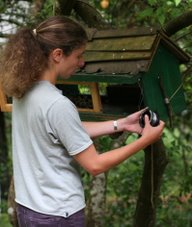
07/24/07
Peaking...
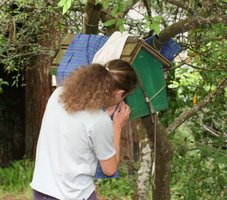
07/24/07
Oops, wrong bird!
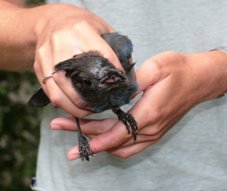
Demonstrating the "hold"
Try Again
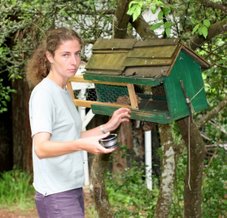
Bird in the Bag

Applying a metal band
Measuring

and more measuring. . . .
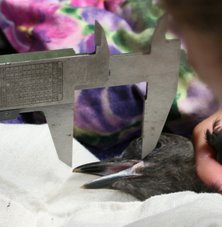
Blood Sampling
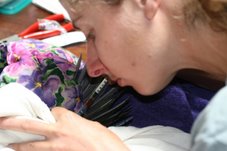
Jeff J's Work

Pia's test tube holder
Weighing
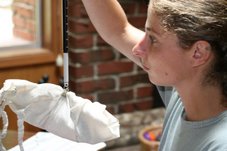
And then....release
When the sun goes down...
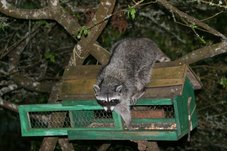
Steller's Jay Taxonomy/Description
Common Name: Steller's Jay
Class: Aves
Order: Passeriformes
Family: Corvidae
Genus: Cyanocitta
Species: Cyanocitta stelleri
Steller’s jay belongs to the family, Corvidae, in the Avian Order Passeriformes. Passeriformes is the order of perching birds. Corvidae is the jay, magpie and crow family. The Steller's jay's scientific name is Cyanocitta stelleri. The generic name, cyanocitta, means "blue jay". Its specific name, stelleri, named for George W. Steller (1709-1746). Steller was a German zoologist who explored the coastal areas of the northern Pacific Ocean in 1740.
Band Colors
black | white | purple | red | orangeBands are read in the following order:
light blue and light blue | green
Note: Light blue is difficult to read. It darkens with age, resembling a green band. (b/w/p/r/o/lb/g)
right bottom band
right top band
left bottom band
left top band
Data Collecting
This information was copied from the website of Dr. Jeff Black, Humboldt State University Wildlife Department.
The data to include for each record:
- Bird’s color code
- Size of social group seen at the same time
- Associates’ color codes (or if unbanded = UNB; or not determined = NOTD)
- Number of times associates came within 3 meters of each other
- Approximate time spent within 3 meter distance (e.g. 2 seconds, 15 sec, etc.)
- Total time you watched the birds (e.g. 5 minutes, 10 min, etc.)
- Time of day; start of observation (e.g. 1935)
- Date (e.g. 9.30.99)
- Location of observation (e.g. Rewood Bowl SW corner west bleachers. And state whether the bird was seen at a birdfeeder or in trees, etc)
- Comments (e.g. deformed leg, feather tuft on back, etc.)
Arcata Steller's Jay Sightings
Mr. Go
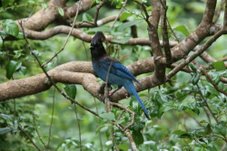
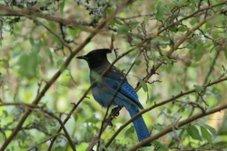
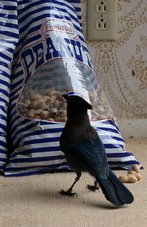
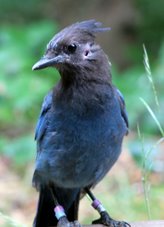
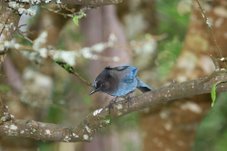
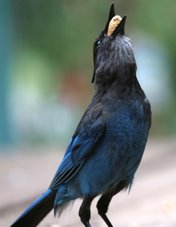
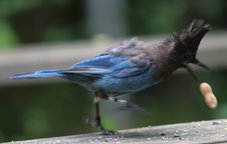
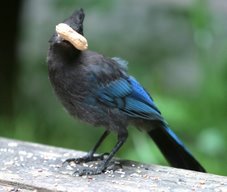
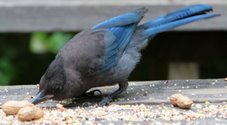
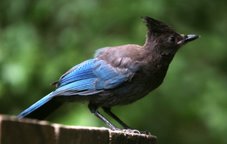
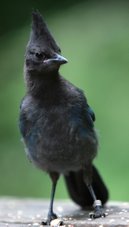

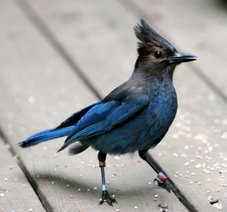
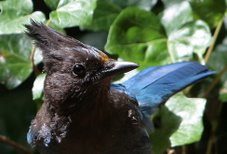
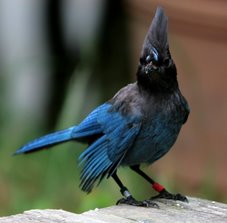
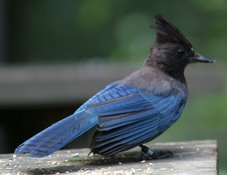
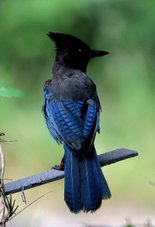
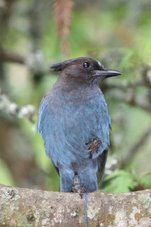
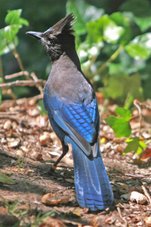
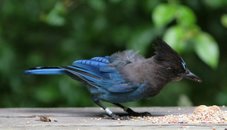
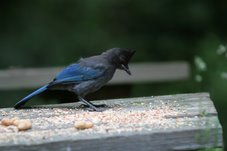
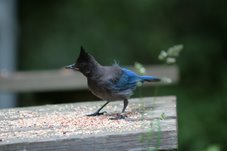
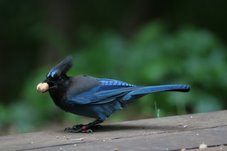
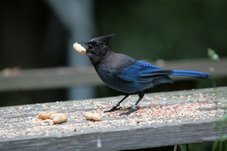
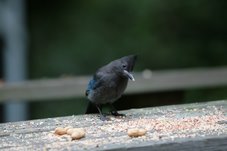
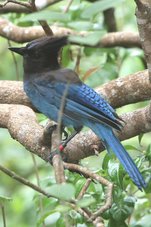
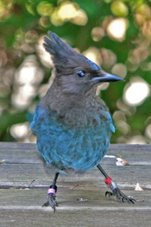
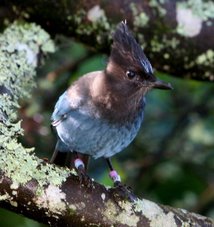
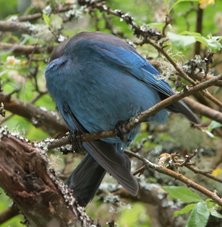
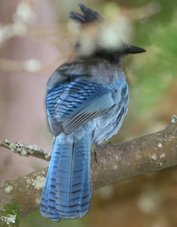
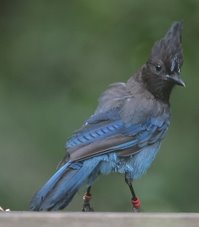
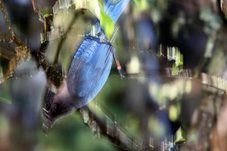
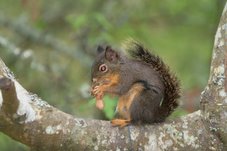
No comments:
Post a Comment